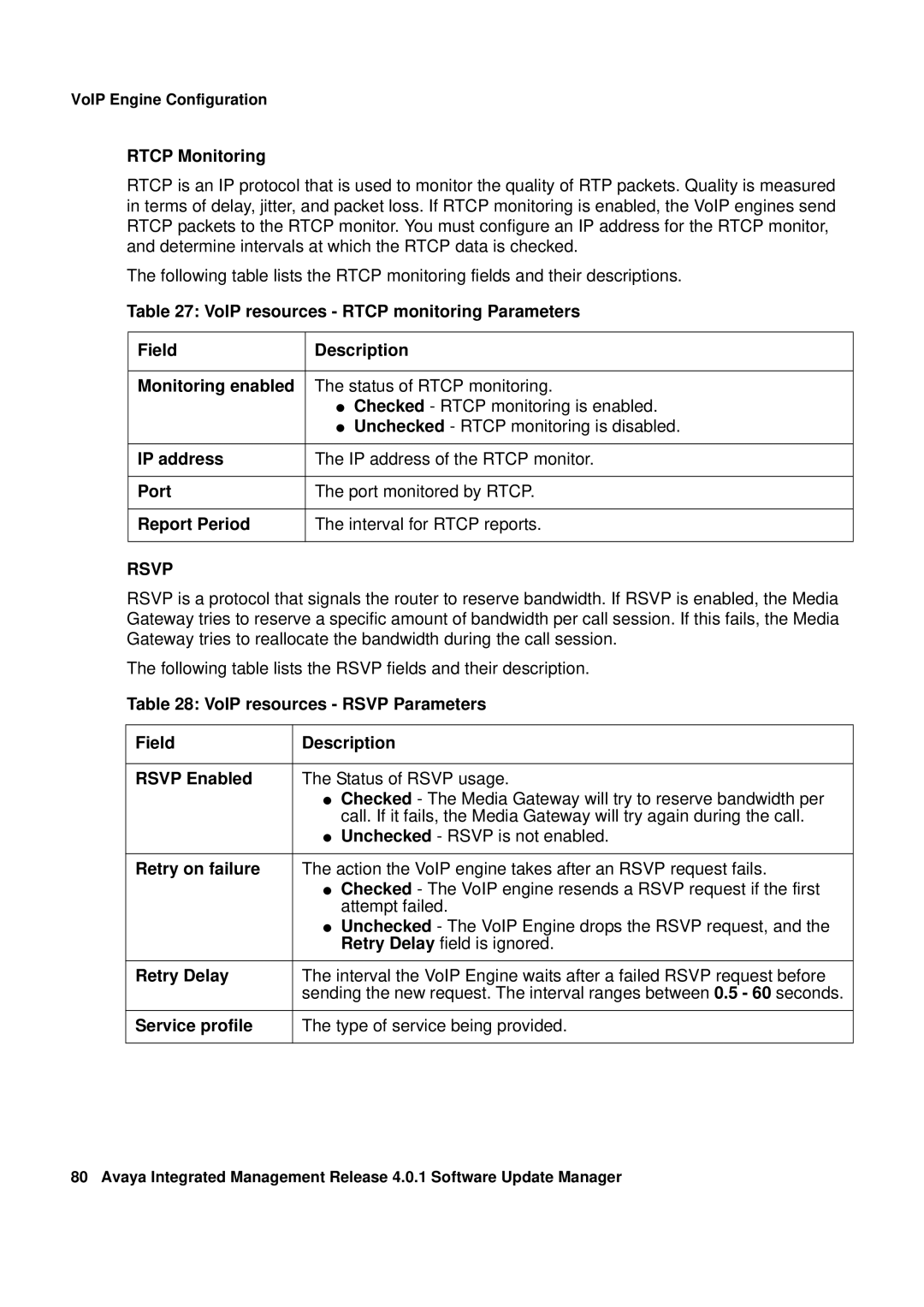VoIP Engine Configuration
RTCP Monitoring
RTCP is an IP protocol that is used to monitor the quality of RTP packets. Quality is measured in terms of delay, jitter, and packet loss. If RTCP monitoring is enabled, the VoIP engines send RTCP packets to the RTCP monitor. You must configure an IP address for the RTCP monitor, and determine intervals at which the RTCP data is checked.
The following table lists the RTCP monitoring fields and their descriptions.
Table 27: VoIP resources - RTCP monitoring Parameters
Field | Description |
|
|
Monitoring enabled | The status of RTCP monitoring. |
| ● Checked - RTCP monitoring is enabled. |
| ● Unchecked - RTCP monitoring is disabled. |
|
|
IP address | The IP address of the RTCP monitor. |
|
|
Port | The port monitored by RTCP. |
|
|
Report Period | The interval for RTCP reports. |
|
|
RSVP
RSVP is a protocol that signals the router to reserve bandwidth. If RSVP is enabled, the Media Gateway tries to reserve a specific amount of bandwidth per call session. If this fails, the Media Gateway tries to reallocate the bandwidth during the call session.
The following table lists the RSVP fields and their description.
Table 28: VoIP resources - RSVP Parameters
Field | Description |
|
|
RSVP Enabled | The Status of RSVP usage. |
| ● Checked - The Media Gateway will try to reserve bandwidth per |
| call. If it fails, the Media Gateway will try again during the call. |
| ● Unchecked - RSVP is not enabled. |
|
|
Retry on failure | The action the VoIP engine takes after an RSVP request fails. |
| ● Checked - The VoIP engine resends a RSVP request if the first |
| attempt failed. |
| ● Unchecked - The VoIP Engine drops the RSVP request, and the |
| Retry Delay field is ignored. |
|
|
Retry Delay | The interval the VoIP Engine waits after a failed RSVP request before |
| sending the new request. The interval ranges between 0.5 - 60 seconds. |
Service profile | The type of service being provided. |
|
|
80 Avaya Integrated Management Release 4.0.1 Software Update Manager
